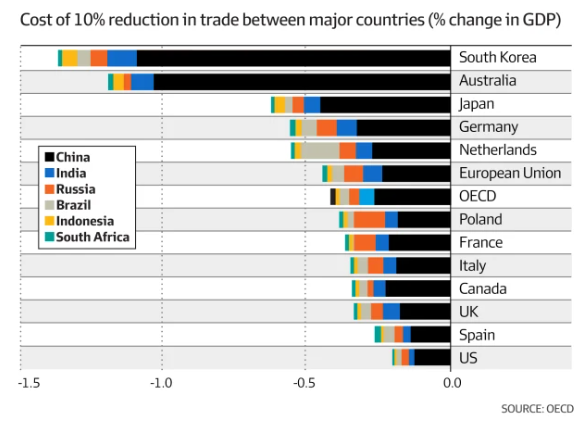
Long COVID cost the Australian economy almost $10 billion in lost labour hours in 2022, according to new research.
The study, published in the peer-reviewed Medical Journal of Australia, has calculated the number of hours Australians could not work or were forced to reduce their hours as a result of ongoing COVID-19 symptoms 12 months after their diagnosis.
The research explored the number of COVID-19 infections between January 2022 to December 2023.
It found during September 2022 about 1.3 million Australians were living with long COVID and of that number about 55,000 were children aged four and under.
How many hours were lost due to long COVID?
Researchers explored population serosurvey data from more than 5,000 working adults, and developed a mathematical model to calculate the number of ongoing COVID-19 symptoms.
The study looked at adults who had symptoms between three to 12 months, as well as those who never recovered from their illness and had symptoms for more than a year.
Australian National University professor Quentin Grafton, who worked on the study and specialises in economics, said there were about 100 million hours lost in terms of labour.
Workers aged 30 to 49 contributed more than 50 per cent of the total labour lost.
“That has an impact not only for those people who have long COVID but on those people who look after them, care for them and their family and friends. It’s an impact on the economy as a whole,” he said.
“When we’re talking about 10 billion that’s sort of a median estimate for the losses in Australia, that works out to almost $400 per person.”
Professor Grafton said governments, policymakers and workplaces needed to take much greater responsibility because the cost of long COVID was much greater than putting in place better frameworks.
“It’s not a big cost, it’s not trivial but it’s a lower cost than the cost that we’re incurring at the moment with long COVID,” he said.
“It seems to me the basic economics cost benefit analysis tells us it makes sense from a social perspective, from a health perspective, public health perspective … It’s time that decision makers step up.”
What are some solutions?
Researchers have estimated by December this year, there is a likelihood that between 173,000 to 873,000 Australians will still be living with long COVID a year after their initial infection — that does not include reinfection.
University of New South Wales Professor Raina MacIntyre, who specialises in epidemiology, led the study.
She said it was time for a more nuanced policy around the coronavirus, and its long-term impacts.
“I think the long-term impact is not going to be good unless we change course,” she said.
“Start encouraging more people to get vaccinated, allow wider access to antivirals, take measures like safe indoor air seriously … look at situations where we do need to use masks, like in hospitals, in clinical areas.”
Professor MacIntrye also highlighted the need for better policies on vaccination for children.
Vaccination is not currently recommended for Australian children under five years except those with medical conditions that “increases the risk of severe COVID-19 illness”.
The US Centers for Disease Control and Prevention recommends COVID-19 vaccines for everyone six months and older.
“It’s not a nothing burger in children. It is a serious infection.”
She said there were simple ways to minimise risk when it came to COVID-19 infections.
“Using an air purifier, which is not very expensive, or opening a window if there is a window that can be opened, or wearing a mask,” she said.
“A lot of people just say most people recover from long COVID. Well, you’ve got to think of it from a population health perspective, even if only 2 per cent of people have long COVID that’s a major public health population health burden.”



